Authored by the RAIN Alliance Healthcare Workgroup
If you follow market trends, there is serious momentum towards the implementation of RAIN RFID (UHF RFID) in healthcare and pharmaceutical applications. Current applications of RAIN RFID in healthcare include asset tracking (beds, IV pumps, etc.), inventory management, and dispensing of medical devices, medication, and surgical supplies. In the case of pharmaceutical items, the tagging has been accomplished at the hospital facility, as opposed to being tagged at the source of manufacture. However, last year, a global pharmaceutical manufacturer began tagging anesthesia medication at the source of manufacture, starting a trend that will revolutionize the medication supply chain.
As more pharmaceutical companies begin tagging their medications, we must establish a tagged item performance grading system, to ensure that RAIN RFID tagged medications are accurately identified across all applications in this complex supply chain. During the adoption and growth of RFID tagging in the apparel industry end-users sought tagged item performance grades they could follow to help de-risk investments in RAIN technology.
RAIN retail apparel applications, based on standards outlined by the ARC RFID Lab at Auburn University and GS1, are primarily free space inventory solutions involving textile materials. Solutions for pharmaceutical items, however, involve a complex spectrum of form factors, materials, ingredients, and configurations, which are stored in enclosures ranging from small drawers to large refrigerators. Therefore, any tagged medication grading system must include a correlation of the grades to specific applications. For this reason, the Axia Institute is recommending the use of the GS1 Tagged-Item Performance Protocol (TIPP) methodology.
The Tagged-Item Performance Protocol (TIPP) methodology was developed by GS1, a neutral, not-for-profit organization that develops and maintains the standards for the most widely used supply chain systems in the world. The main benefit of the GS1 TIPP standard is that the testing is performed on the actual product and in real-world applications. Testing tagged items is essential because the medications, packaging (syringes, vials, IV bags, etc.), and product orientation can affect overall RF performance.
The GS1 TIPP framework allows for the submission of new grades and is led by a global standards organization of which most pharmaceutical manufacturers are already members. Third-party testing companies and RAIN RFID labs can closely collaborate with tag manufactures, medication automation system providers, and pharmaceutical manufacturers to define the specific requirements of their products for specific applications within the hospitals. The proposed pharmaceutical family grades will open an advanced globally accessible avenue for all the active nodes of the supply chain to implement and validate RFID tags for target pharmaceutical applications. This will facilitate the adoption of pharmaceutical RFID tagging around the globe, leading to the implementation of RAIN solutions that deter counterfeiting and diversion, while increasing patient safety and improving patient care.
The ARC RFID Lab has developed the ARC “Specification S” that could partially mimic pharmaceutical industry requirements. Although the test is robust, it relies substantially on testing the RF performance of a tag while the tag is on paper or cardstock and includes some minimal on-product testing. This testing does not fully account for the orientation of the product, the unique dielectrics of glass vials/syringes, nor the actual medications. Specification S is a single tag test, and it does not address the impact of multiple samples adjacent to each other in a small environment, something that occurs in smart cabinets at the hospitals. Moreover, this test was designed for the apparel industry with the flexibility of using large inlays with long read distances. Overall, Spec S could not reflect the actual requirement of a custom size inlay designed for a narrow 1mL syringe which should be readable at different orientations in a short read range shelf surrounded by multiple tagged items. Not addressing these essential factors in RF testing could lead to failure of RAIN solutions to provide accurate data critical to patient care and safety.
The RAIN Alliance Healthcare Workgroup is proposing an open and interoperable tagged medication grading system, administered by GS1, in which entities can propose grades, participate in the creation of grades, and benchmark against established grades, as opposed to relying on one entity to manage the entire process.
